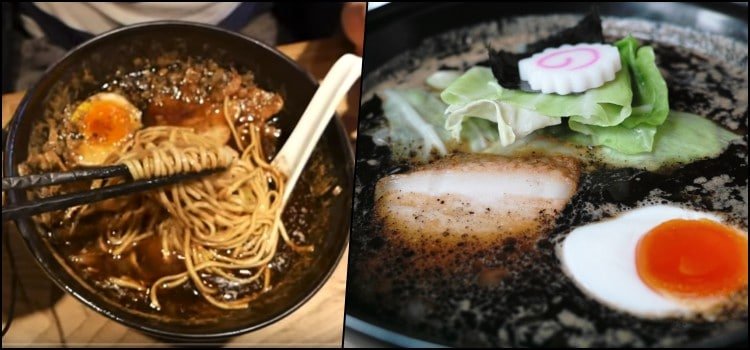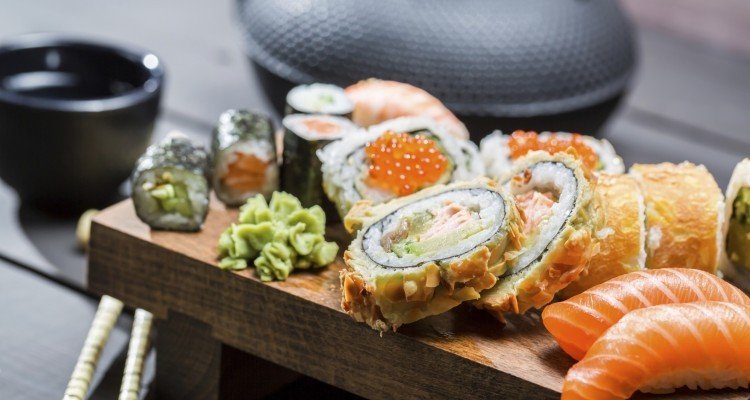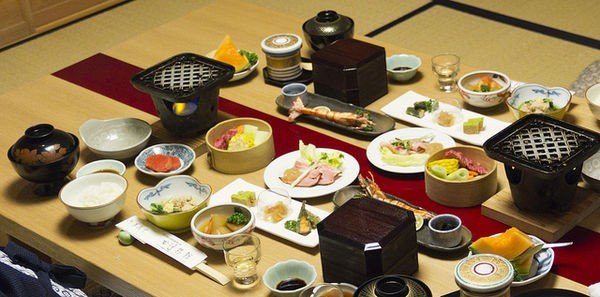When studying Japanese we come across the word yummy and delicious which is oishii [美味しい], but is it the only existing word to express that something is delicious in Japanese? In this article we have separated some alternatives to the word oishii for you to say that something is tasteful and delicious in Japanese.
Table of Content
What does Oishii mean?
First, we must understand what oishii [美味しい] really means. This word is composed of the ideogram bi (美) which refers to beauty, something beautiful and pretty. And also the ideogram aji (味) which refers to flavor and taste. So we are literally saying that the flavor is beautiful.
The first alternative we will mention is exactly the same as oishii [美味] but pronounced differently. The word oishii can also be pronounced as bimi [美味], which are the Chinese readings of this ideogram and does not refer to an adjective like oishii, but rather a noun.
It is obvious that we are not going to use a random noun; we must add this noun in a sentence like "Bimi naru [美味なる]" which indicates that something has become delicious, in the sense of becoming tasty. We can also add where this food is served to refer to the delicious food of a certain place.

Umai [うまい] – Tasty and delicious
This expression umai [うまい] is quite popular, but casual and a little more specific. Besides referring to something tasty, it could be that you are trying to say that something is really appetizing and delicious. A great option that truly expresses the feeling you have for food while you are with friends.
The large confusion is at the origin of its writing which is kind of confusing and indeterminate. According to the dictionary it can be written as [上手い] but it also means splendid, promising, skillful, and esperto. It's as if we were praising not only the food, but also the one who made it.
There is another word that is pronounced umai [甘い] related to taste that literally means sweet, sugary, and bittersweet. Some people end up using this expression in cooking to refer to a tasty flavor, but it is not recommended (unless something is literally sweet or bittersweet). Read our article about flavors in Japanese.
Apparently the original character of umai is [旨] but it is no longer used, where nowadays it is customary to write only with hiragana. This ideogram literally gives the idea of something delicious, tasty and specialty. Over time it was literally replaced by [上手い]. Interestingly, the ideograms [上手] give the idea that something was made by hand.

Zeppin [絶品] - Maravilhoso
The word zeppin (絶品) gives the idea of a masterpiece, a item refined, a perfection or something unique. The word is composed of the ideogram [絶] which means to interrupt and beyond, and the ideogram [品] which means something refined, worthy and is also used as a counter in cooking.
In TV shows and advertisements it is common to find expressions like zeppin gormet [絶品グルメ] or zeppin desu [絶品です] that you can use both casually and formally. Just don't use it randomly because that word is really saying it's one of the tastiest and most delicious things you've ever eaten in your life.
In addition to using these simple words like oishii, umai and zeppin, you can talk more and explain how the food tastes or why it tastes so good. You can express it with few words and end with aji (味) which means flavor.

Other Ways to Say Yummy in Japanese
Some people use common expressions of surprise like saikou [最高] which means the best, wonderful, and supreme. Some girls often say shiawase (幸せ) which means happy, because they are really happy to eat a delicious dish.
Some say that the food is so good that they are addicted to it saying: Kuse ni naru (癖になる). The word kuse [癖] literally means habit, tendency, and addiction. There is also a reverse version of umai that is pronounced maiyu [まいゆ] which literally means the same thing.
Some people use the expression Hoppe ga Ochiru [ほっぺが落ちる] which literally means cheeks falling. This expression indicates that the food is so good that your cheek has surrendered, has been defeated, and has fallen.

Finally, let's leave other words related to delicious and tasty, but that are not usually used today or in all situations.
Responsive Table: Scroll the table to the side with your finger >>
| Portuguese | Japanese | Romaji |
| Splendid (Used when satisfied); | 結構 | kekkou |
| Delicious or gourmet food | 美食 | Bishoku |
| Delicious taste, excellent taste | 風味絶佳 | Fuumizekka |
| delicious taste | 佳味 | Kami |
| Unusual and delicious meal | 珍膳 | Chinzen |
| Unusual and delicious meal | 珍肴 | Chinkou |
| It was delicious | 牛負けた | Ushimaketa |
| Good taste | 好味 | Koumi |
Checklist - 15 Ways to Say Yummy in Japanese
Now that we've reached the end of the article, it's time to count the number of ways to make food taste good:
- Oshii;
- Umai;
- Zeppin;
- Saikou
- Shiawase
- Kuse ni naru
- Maiyu
- Hoppe ga Ochiru
- Kekkou
- Bishoku
- Fuumizekka
- Kami
- Chinzen
- Chinkou
- Ushimaketa
- Koumi
